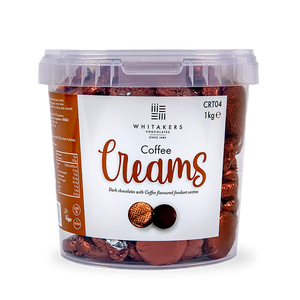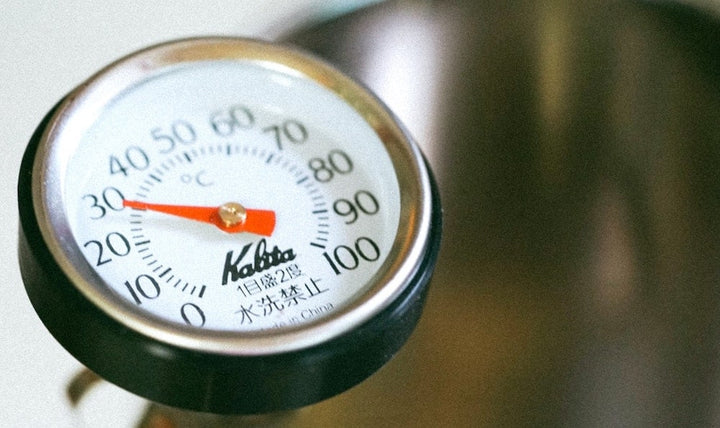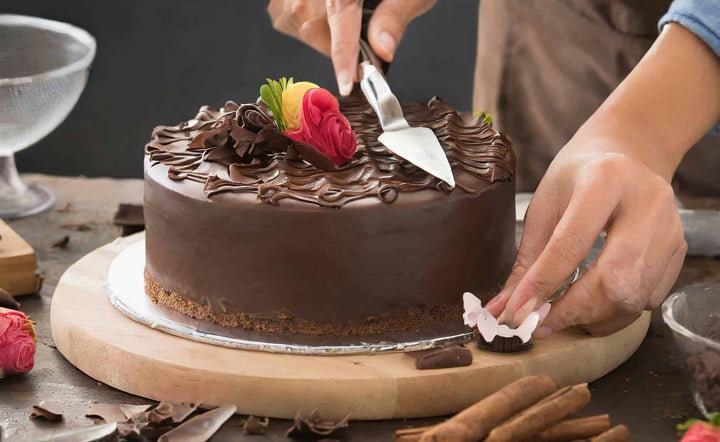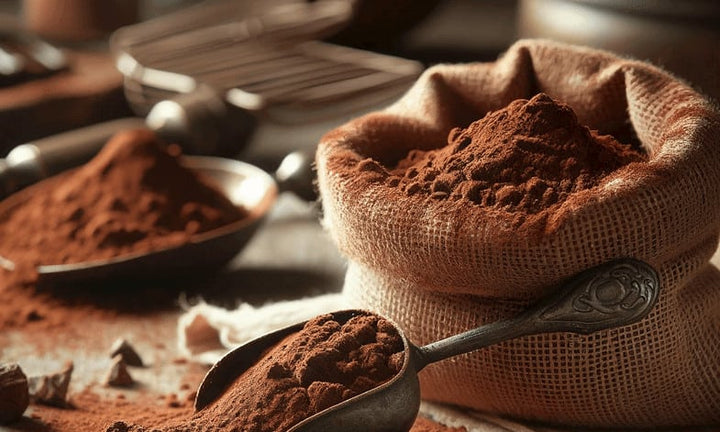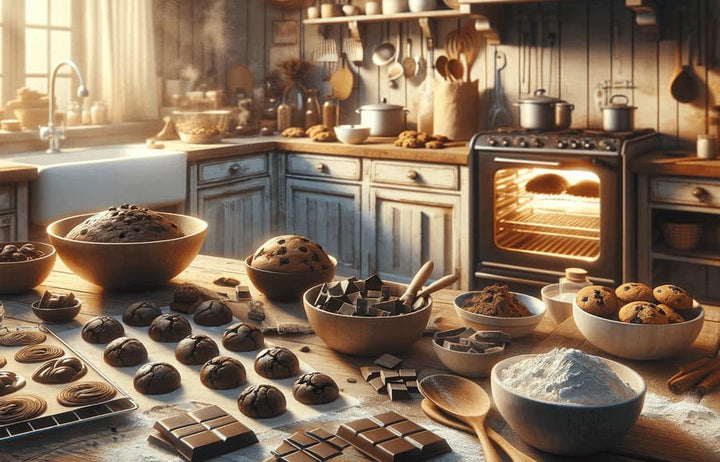Culinary enthusiasts and chocolatiers often ponder, "At what temperature does chocolate melt?"
This seemingly simple query delves into the heart of chocolate's delicate nature and intricate composition.
Understanding this aspect is crucial for those indulging in chocolate-making and anyone who wants to master the art of working with this luxurious ingredient.
From the science behind its melting to practical tips for perfect melting, we will explore all dimensions of this chocolatey conundrum.
At What Temperature Does Chocolate Melt?
| Type of Chocolate | Melting Temperature |
|---|---|
| Dark Chocolate | 45-50°C (113-122°F) |
| Milk Chocolate | 40-45°C (104-113°F) |
| White Chocolate | 37-40°C (99-104°F) |
Chocolate's melting point varies depending on its type, each having its unique composition that influences its melting behaviour:
-
Dark Chocolate: Typically melts between 45°C to 50°C (113°F to 122°F). This higher range is due to its higher cocoa solid and cocoa butter content.
-
Milk Chocolate: Melts at slightly lower temperatures, usually around 40°C to 45°C (104°F to 113°F), because of the added milk solids and sugar.
-
White Chocolate: White chocolate has the lowest melting point, ranging from 37°C to 43°C (98°F to 110°F), due to its high sugar and milk content and absence of cocoa solids.
These melting points are crucial to understanding how to work with chocolate in various culinary applications, from baking to chocolate-making.
The precise control of temperature is crucial for achieving the perfect melt and ensuring the desired consistency and texture in the final product.

What Temperature Does Dark Chocolate Melt?
Dark chocolate typically melts at a temperature range between 45°C to 50°C (113°F to 122°F).
This slightly higher melting point than milk or white chocolate is due to its higher cocoa solid and cocoa butter content.
When melting dark chocolate, it's crucial to heat it gradually and avoid exceeding this temperature range to maintain its quality and texture.
Overheating can lead to a burnt taste and alter the chocolate's smooth consistency.
What Temperature Does Milk Chocolate Melt?
Milk chocolate melts at a slightly lower temperature than dark chocolate, typically within the range of 40°C to 45°C (104°F to 113°F).
This difference is due to the added milk solids and sugar in milk chocolate, which affect its melting properties.
When melting milk chocolate, it's essential to do so gently and at controlled temperatures to prevent burning or seizing.
This temperature range is ideal for ensuring a smooth, even melt, perfect for various culinary applications from making ganache to coating sweets.
What Temperature Does White Chocolate Melt?
White chocolate melts at a slightly lower temperature range compared to dark and milk chocolates, typically between 37°C to 43°C (98°F to 110°F).
This lower melting point is due to the high content of cocoa butter, milk solids, and sugar in white chocolate and the absence of cocoa solids.
When melting white chocolate, it's essential to use gentle heat and monitor the process closely.
The chocolate should be heated slowly and stirred frequently to prevent it from burning or seizing.
Due to its delicate nature, precise temperature control is crucial for achieving a smooth and creamy melt, making it ideal for various sweet treats and desserts.

How Do Cocoa Butter and Crystals Affect Chocolate Melting Points?
| Type of Crystallisation | Melting Point |
|---|---|
| Form I (γ) | 17-18°C (62.6-64.4°F) |
| Form II (α) | 21-22°C (69.8-71.6°F) |
| Form III (β') | 25-26°C (77-78.8°F) |
| Form IV (β') | 27-28°C (80.6-82.4°F) |
| Form V (β) | 33-35°C (91.4-95°F) |
| Form VI | 36°C (96.8°F) and above |
Cocoa butter, a key component of chocolate, plays a significant role in determining the melting point of chocolate.
It consists of various types of fat crystals, each with its melting point.
These crystals affect the texture, consistency, and melting behaviour of chocolate.
There are six different forms of cocoa butter crystals (from Form I to VI), each with a unique melting point:
-
Form I: Melts at 17°C (63°F). This form is unstable and rarely used in chocolate production.
-
Form II: Melts at 21°C (70°F). It's slightly more stable but still not ideal for chocolate production.
-
Form III: Melts at 26°C (78°F). This form starts to give chocolate a firmer structure.
-
Form IV: Melts at 28°C (82°F). This form gives chocolate a good snap but can have a dull finish and is unstable.
-
Form V: Melts at 34°C (93°F). This is the most desirable form for chocolate production. It gives chocolate a glossy finish, a firm structure, and a smooth, melting quality.
-
Form VI: Melts at 36°C (97°F). This form is stable but can make the chocolate too hard and less palatable.
The process of tempering chocolate aims to achieve Form V crystals.
These crystals ensure the chocolate has the right texture, sheen, and melting characteristics.
However, these melting points illustrate how the different forms of cocoa butter crystals impact the properties of chocolate, particularly its melting point, texture, and appearance.
What is Chocolate Tempering?
Chocolate tempering is a precise and controlled process of heating and cooling chocolate to stabilize the cocoa butter crystals.
This process ensures the chocolate sets have a smooth, glossy finish and a firm snap when broken.
The tempering process involves three key steps:
-
Melting: The chocolate is gently heated to a specific temperature to melt all the cocoa butter crystals. For dark chocolate, this is usually around 45°C to 50°C (113°F to 122°F); for milk chocolate, around 40°C to 45°C (104°F to 113°F); and for white chocolate, around 37°C to 43°C (98°F to 110°F).
-
Cooling: Next, the chocolate is cooled to allow crystal forms IV and V to develop. This is typically done by stirring the chocolate at room temperature or by adding "seed" chocolate, which already contains stable crystals. The chocolate is cooled to about 27°C to 28°C (80°F to 82°F) for dark chocolate, 26°C to 27°C (78°F to 80°F) for milk chocolate, and 25°C to 26°C (77°F to 78°F) for white chocolate.
-
Reheating: Finally, the chocolate is gently reheated to a working temperature where it retains the desirable Form V crystals. This temperature is lower than the initial melting point: about 31°C to 32°C (88°F to 90°F) for dark chocolate, 29°C to 30°C (84°F to 86°F) for milk chocolate, and 27°C to 28°C (80°F to 82°F) for white chocolate.
Properly tempered chocolate has a smooth and glossy finish, snaps when broken, and doesn’t melt quickly in your hands.
It’s an essential chocolate-making technique, especially for confectionery items like chocolate bars, truffles, and decorations.
Good tempering also prevents the chocolate from developing a bloom, a whitish coating that can appear on the surface due to the crystallisation of sugar or fat.
Does Chocolate Melt at Room Temperature?
Chocolate can melt at room temperature, particularly in warmer conditions.
The melting point of chocolate is slightly below human body temperature, which is why chocolate melts in your hand.
Here's a brief overview of the melting points for different types of chocolate:
- Dark Chocolate: Melts at around 45°C to 50°C (113°F to 122°F).
- Milk Chocolate: Melts at about 40°C to 45°C (104°F to 113°F).
- White Chocolate: Has a lower melting point of around 37°C to 43°C (98°F to 110°F).
Room temperatures can easily approach or exceed these ranges, especially in warmer climates or during summer months.
Therefore, chocolate can begin to soften and potentially melt at room temperature, depending on the type of chocolate and the ambient conditions.
To prevent melting and to maintain its quality and texture, chocolate should ideally be stored in a cool, dry place with a temperature between 15°C to 18°C (59°F to 64°F).
This helps to preserve its flavour and appearance, preventing it from becoming soft, overly hard, or developing a whitish coating known as 'bloom'.
Where Can You Buy the Best Melting Chocolate?
You can find some of the best melting chocolate with Whitakers easymelt products, such as our Dark Chocolate 55% Couverture Chocolate Mini Shards.
These mini shards are designed for easy and efficient melting, making them ideal for various culinary applications where smooth, high-quality melted chocolate is desired.
Some Notes From an Expert Chocolatier
As an expert chocolatier, I can attest to the crucial role that precise temperature control plays in the art of chocolate making.
Melting chocolate is a delicate process that demands careful attention.
Whether tempering chocolate for a glossy finish and a crisp snap or melting it for a smooth ganache, the difference between perfection and disaster often hinges on a matter of degrees.
In my profession, understanding the unique properties of different types of chocolate and how they respond to heat is fundamental.
This knowledge allows me to manipulate the chocolate to maximise its flavour and texture, which is essential for creating exquisite chocolate delicacies.
Final Notes On Chocolate Melting Temperatures
Understanding the melting temperatures of chocolate is more than just a technicality; it's a critical element in the art of chocolate craftsmanship.
Whether it's dark, milk, or white chocolate, each variety requires a specific approach to melting, influenced by its unique composition and properties.
The precise control of temperature is essential for achieving the perfect consistency and texture and preserving the delicate flavours and quality of the chocolate.
This knowledge is crucial for chocolatiers, pastry chefs, and anyone passionate about chocolate work.
